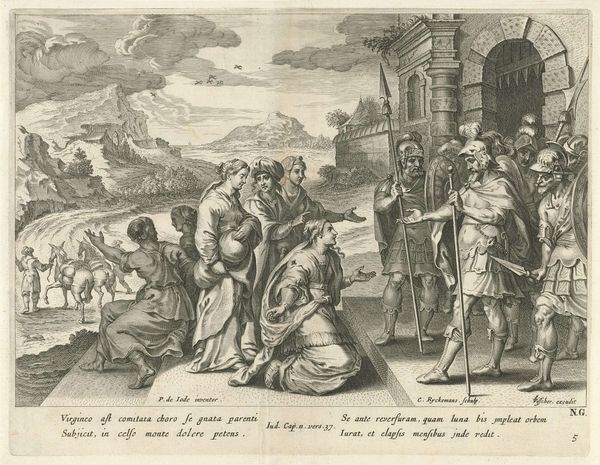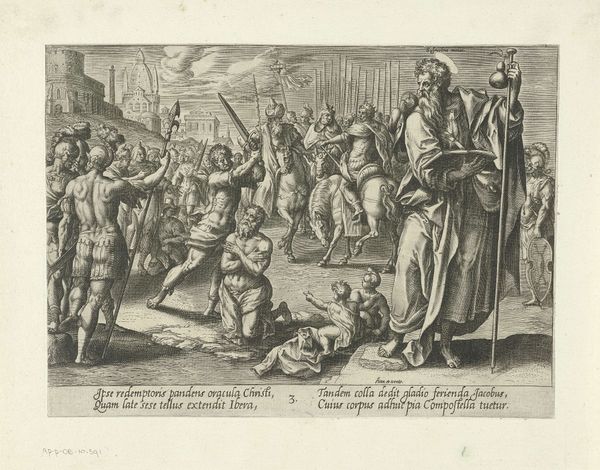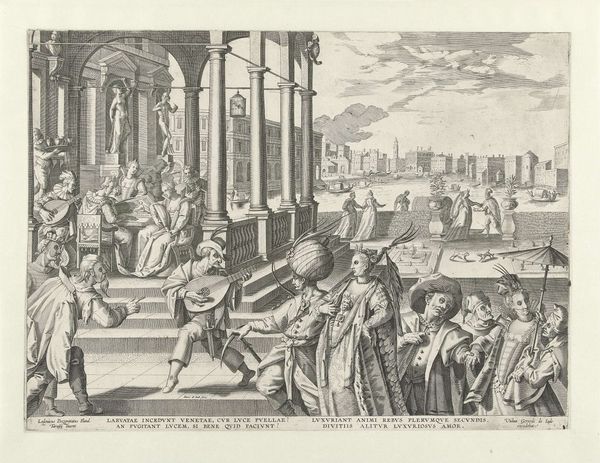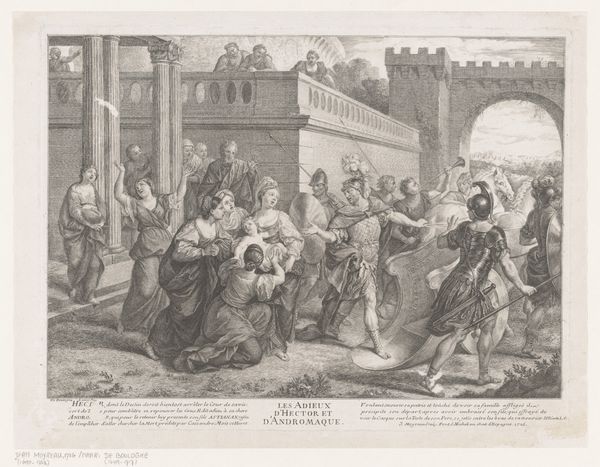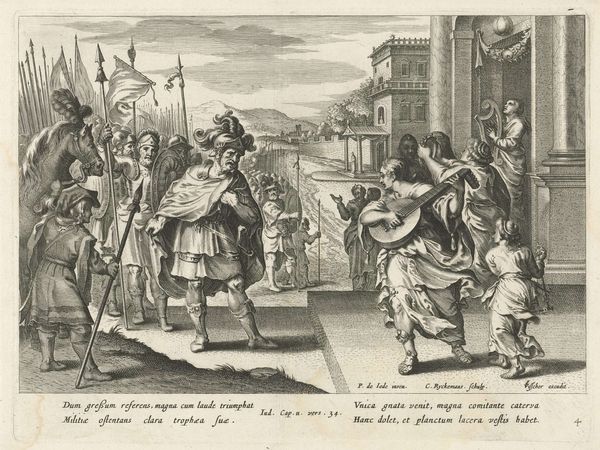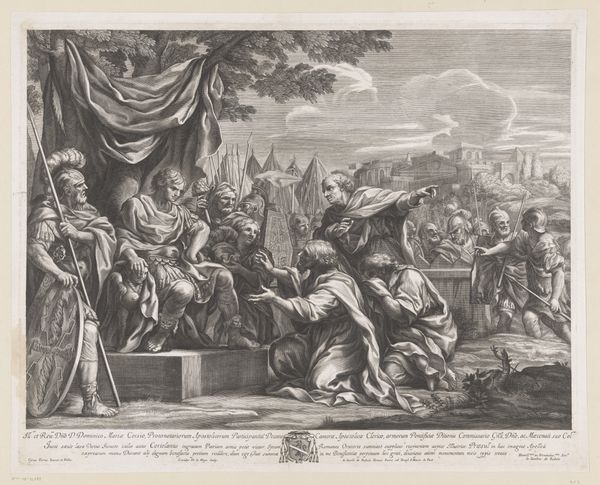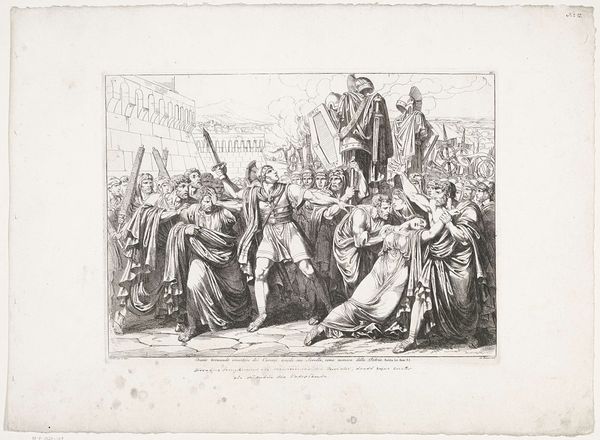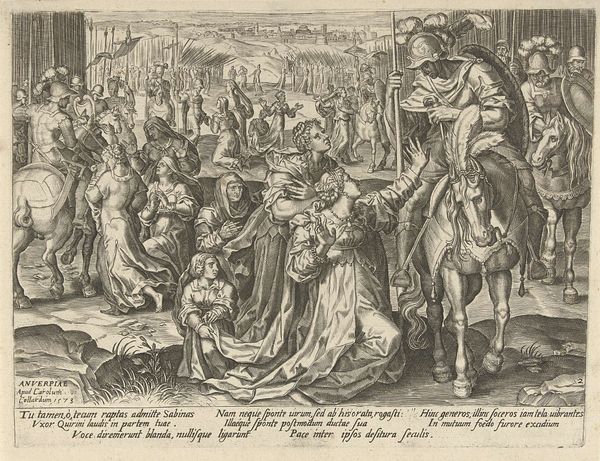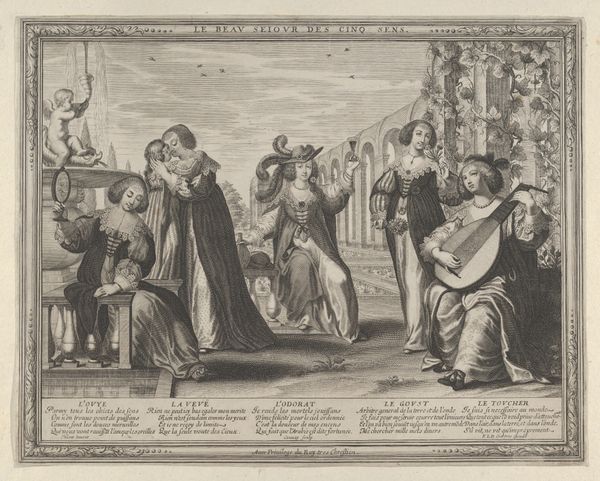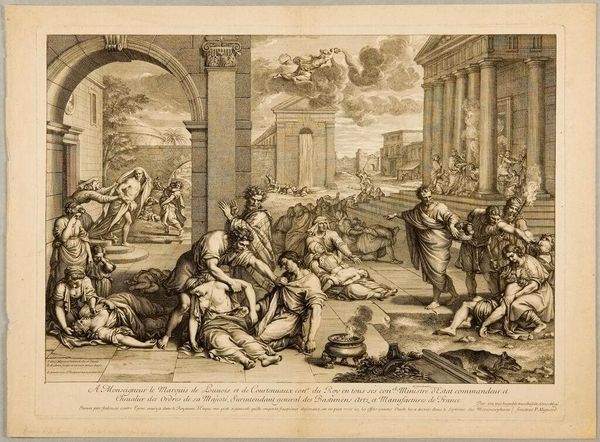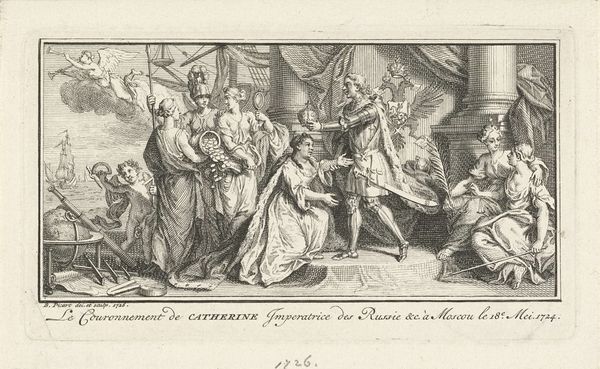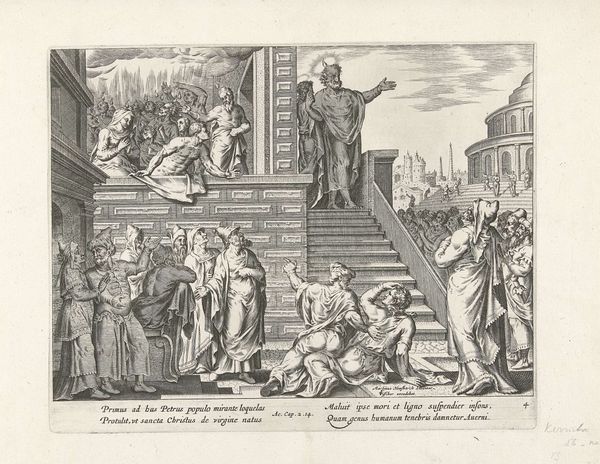
print, engraving
#
narrative-art
#
baroque
# print
#
landscape
#
figuration
#
line
#
history-painting
#
engraving
Dimensions: height 215 mm, width 280 mm
Copyright: Rijks Museum: Open Domain
Editor: This is Nicolaes Ryckmans's 1643 engraving, "Jephthah Sacrifices His Daughter." The drama is palpable. You can feel the tension and impending doom just looking at it. What stands out to you? Curator: It's fascinating how Ryckmans visually translates a story ripe with the conflict between patriarchy, religious zeal, and the silencing of female voices. Think about the socio-political context: this image appears during a time of religious wars and rigid social hierarchies. Ryckmans, consciously or not, gives us a visual rendering of these tensions. Notice how the men are arranged, their postures suggesting authority and action, while the women huddle, passive and grief-stricken. Editor: So, the arrangement of figures contributes to the story’s emotional impact and mirrors the power dynamics of the era? Curator: Precisely. And let's consider the landscape itself. It’s not a peaceful, pastoral setting. There’s a fortress, soldiers—it speaks to a world defined by conflict. What does Jephthah’s sacrifice really represent here? Editor: Maybe it’s about more than just religious duty? Perhaps it shows the extreme cost of patriarchal promises, especially on female bodies? Curator: Absolutely. Consider how the lines of the engraving almost seem to cage the female figures. It begs the question: who truly benefits from Jephthah's victory? The state? The church? Certainly not his daughter. Editor: That gives me a lot to think about. It seems like the engraving, beyond just telling a biblical story, is commenting on the cost of power and societal structures. Curator: Yes, art becomes a site for grappling with these complex, often uncomfortable, realities. Hopefully viewers start asking who gets to tell the stories.
Comments
No comments
Be the first to comment and join the conversation on the ultimate creative platform.
